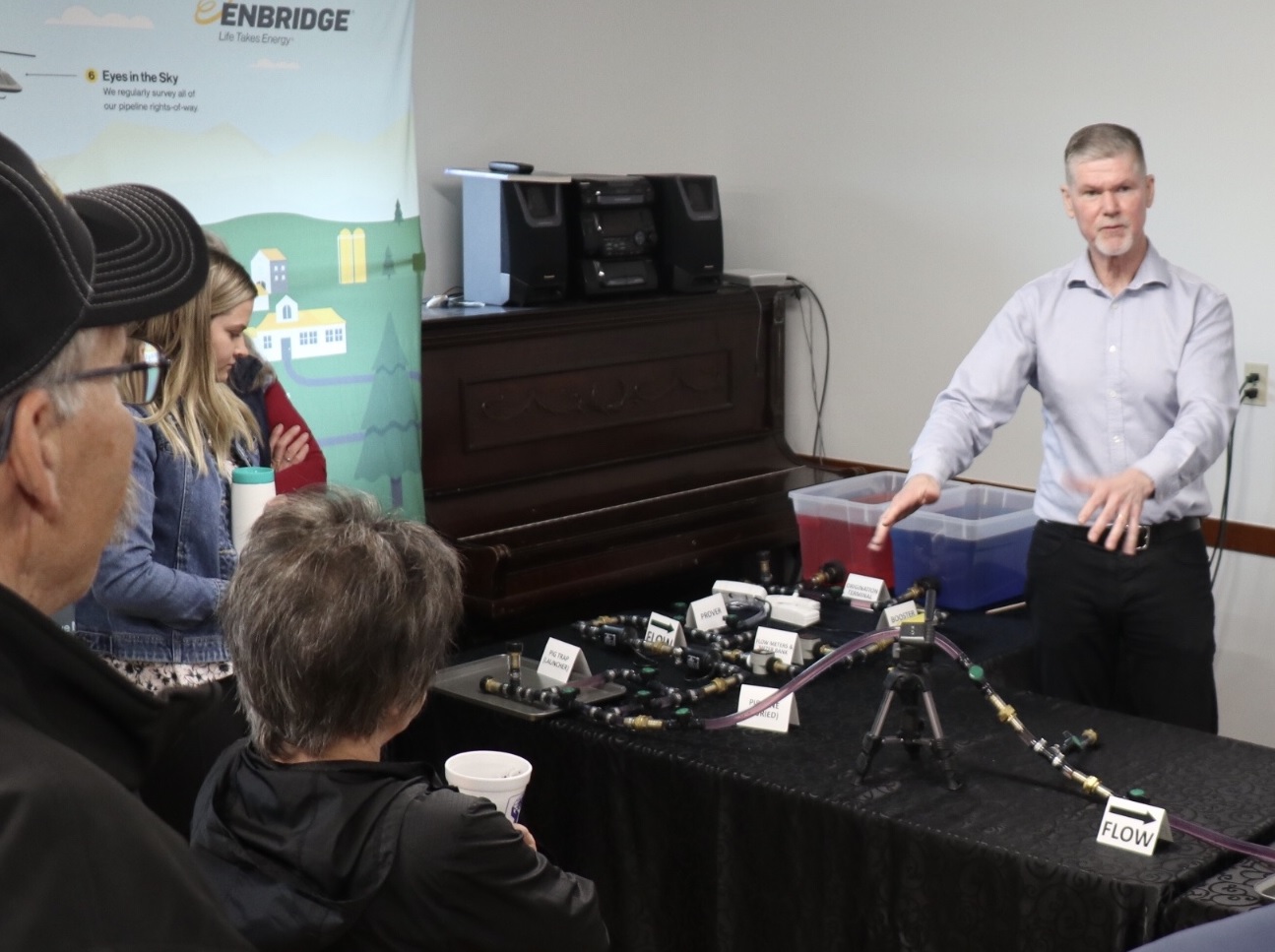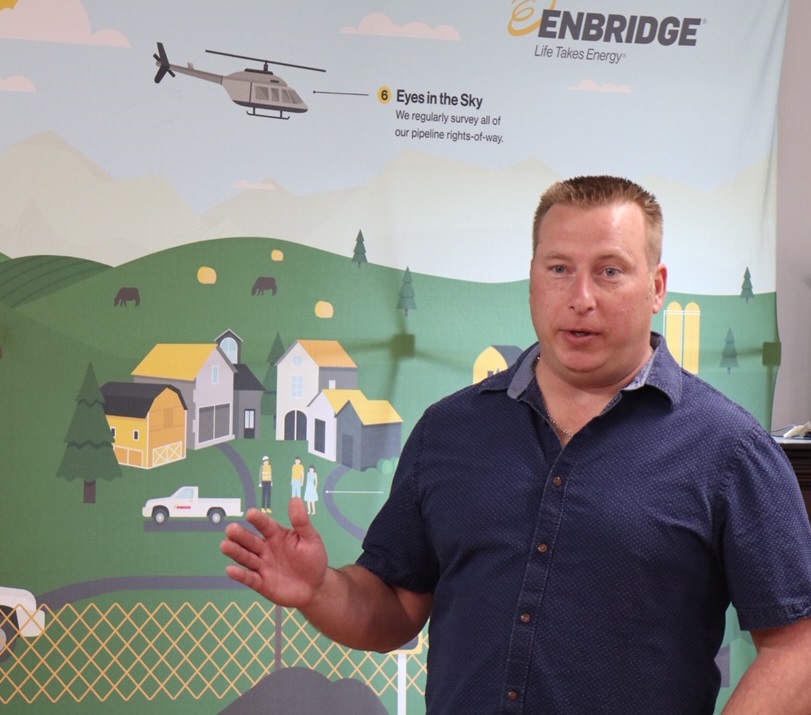For the Canadian oil industry, Hardisty is the hub
Local dignitaries go behind the scenes at Enbridge’s well-connected crude terminal
For a small east-central Alberta town, a lot happens in Hardisty from an oil industry perspective—both above and below ground.
Earlier this month, Enbridge—one of the largest operators in the area—hosted local dignitaries for a behind-the-scenes look at its oil storage terminal. Representatives of nine regional communities (from Flagstaff and Camrose counties, the M.D. of Provost, and Special Area #3) attended the event, which also included a scale-model demonstration of how a pipeline works, samples of the different varieties of crude oil, and a presentation on emergency preparedness.

Enbridge community engagement rep Peter Hansen explains the intricacies of operating an oil pipeline during a tour of the Hardisty Terminal by local dignitaries in May 2019.
“Hardisty is the meeting point for many major pipelines in addition to our Mainline, giving it strategic importance to the North American oil and gas industry,” explains Shane Thompson, manager of Hardisty-area operations for Enbridge. “Some 3.5 million barrels of crude oil and refined products move safely through our facilities in this area every day.”
Enbridge’s three Hardisty area storage facilities sit on some 1,000 acres, and consist of the Hardisty Terminal, underground caverns to the north across Highway 13, and the Express Terminal to the east. These facilities are run by a team of 65 employees and comprise 38 above-ground tanks and four underground caverns capable of storing up to 16 million barrels of crude oil and refined products.
For perspective, that’s equivalent to almost 23,000 (700-barrel) rail cars; or put another way, just about 80 percent of what the U.S. consumes each day (19.96 million barrels).
The Hardisty Terminal straddles the Enbridge Mainline, which includes several pipelines running from Edmonton to the Canada-U.S. border at Gretna, Manitoba, and the Lakehead System or U.S. Mainline, which carries on to Clearbrook, Minnesota and Superior, Wisconsin, and delivers crude to markets in Minnesota, northern Illinois, Indiana, Ohio, Michigan and southern Ontario.

Enbridge regional emergency response coordinator Gary Radtke discusses the numerous ways we ensure our pipelines remain safe to operate.
Other Enbridge market access pipelines serve markets in the U.S. Gulf Coast, Oklahoma, southern Illinois, and Quebec.
In addition to Mainline supply via Edmonton, the Hardisty Terminal is fed by two Fort McMurray-area lines (the Athabasca Pipeline and the Athabasca Pipeline Twin) with a combined average annual capacity of 1.37 million barrels per day.
Meanwhile, the Express Terminal serves its namesake pipeline, which transports some 280,000 barrels per day from Hardisty to Casper, Wyoming where it connects via the Platte Pipeline to Wood River, Illinois—a U.S. refining hub across the Mississippi River from St. Louis.
Like Enbridge itself, Hardisty has continued to grow and adapt to supply-and-demand trends along with the industry it serves. Most recently, three new storage tanks (with a combined total capacity of 990,000 barrels) and related infrastructure were added to the terminal under Enbridge’s Line 3 Replacement Program.
“These facilities will continue to provide flexibility for Enbridge and our customers to safely and reliably ship their products when the time is right,” says Thompson.
“The products we ship to refineries across North America are essential to maintaining the lifestyle we all enjoy and our employees are very proud of the role we play in making this happen.”








